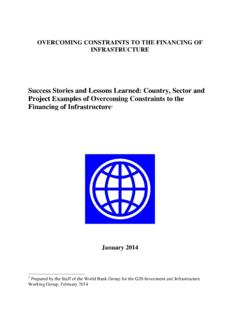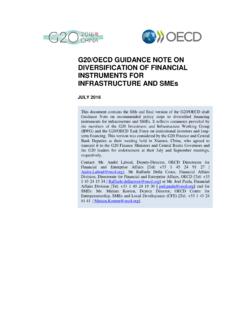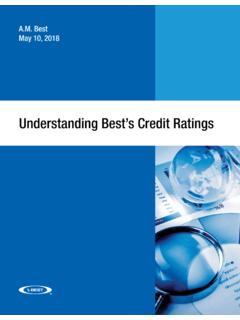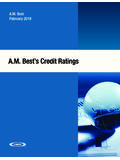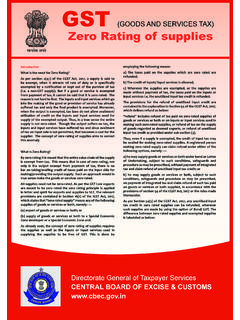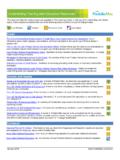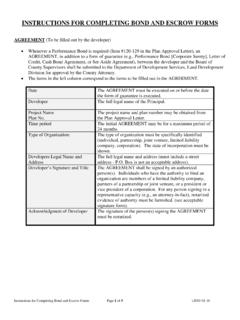Transcription of MULTILATERAL DEVELOPMENT BANKS ACTION PLAN TO …
1 MULTILATERAL DEVELOPMENT BANKS ACTION plan TO OPTIMIZE BALANCE SHEETS MULTILATERAL DEVELOPMENT BANKS (MDBs) have been key partners in advancing global prosperity over the past 70 years, during which time the world has witnessed a remarkable overall reduction in poverty. MDBs provide a unique contribution to global DEVELOPMENT efforts. They can provide significant levels of funding, but also have the ability to crowd in additional resources from private and other public sources. Their convening power allows MDBs to mobilise and align key stakeholders around shared DEVELOPMENT outcomes.
2 MDBs have a unique ability to support required policy reforms, and to deploy funding to support technical assistance, build project pipelines and turn short-term marginal investments into long-term bankable ones. Given the unique value added of MDBs in advancing the post-2015 agenda, the G20 is committed to using these institutions to their full potential. Fully utilizing MDBs requires shareholders to advance voice and capital discussions, to ensure that the institutions are properly capitalized with shareholdings reflective of the distribution of the global economy. It also requires that limited MDB capital resources are used as efficiently as possible.
3 To advance the efficiency side of this agenda, in 2013 the G20 began calling on MDBs to work through their Boards to optimize balance sheets, in order to increase lending without substantially increasing risks or damaging credit ratings. At that time, seven major international DEVELOPMENT MDBs had $359 billion in outstanding Since 2013, the World bank has revised its approach to capital efficiency, allowing for total lending capacity to increase by over $50 billion. The Asian DEVELOPMENT bank has merged its non-concessional and concessional windows to allow for lending capacity to increase by an estimated $70 billion.
4 Three MDBs have advanced a proposal for an MDB exposure exchange, which could free up an additional $12 billion in capacity for the African DEVELOPMENT bank alone. These, and additional initiatives from other MDBs, are positive steps forward aligned with the G20 call. While increased DEVELOPMENT lending is desirable, any discussion of volume is understood as secondary to the DEVELOPMENT impact achieved and the recognition that engaging increasingly in lower-income countries or in riskier activities is more capital-intense. In this sense, increased DEVELOPMENT lending should be thought of as shorthand for increased risk-bearing capacity by the MDBs.
5 AAA credit ratings have been at the core of the business model of many MDBs, and additional measures would be designed to take full advantage of the balance sheet potential of those institutions without putting credit ratings at undue risk. Increased lending could be used to increase infrastructure investments, climate finance or spending in other priorities of the BANKS and their partners. It is understood that any incremental MDB operations would be done in a 1 African DEVELOPMENT bank (AfDB), Asian DEVELOPMENT bank (ADB), European bank for Reconstruction and DEVELOPMENT (EBRD), Inter-American DEVELOPMENT bank (IDB), Inter-American Investment Corporation (IIC), International bank for Reconstruction and DEVELOPMENT (IBRD) and International Finance Corporation (IFC).
6 Data from Standard & Poor s Supranational Report 2014. manner consistent with existing debt sustainability frameworks, and in respect of the MDBs full set of governance processes. Beyond the immediate optimization of their own balance sheets, MDBs should continue to advance their engagement with the private sector and to further explore how limited public resources can be used to leverage additional private finance. MDBs can help develop pipelines of well-structured bankable projects, and provide technical assistance for this and other purposes. They can play a catalytic role by participating in a wide number of projects, as advisors or with small investment commitments (such as through a fund of funds approach), that allows for several projects to benefit from their technical expertise, country knowledge and relationships with governments, regulators, investors and the private sector.
7 MDBs could also reconsider new financing entities, with equity contributions from participating members, to raise capital among long-term institutional investors. This ACTION plan calls for the MDBs to work through their respective Boards to consider five measures that could increase lending through balance sheet optimization. 1. Noting recent financial reforms, including at the World bank Group and elsewhere, MDBs are asked to engage shareholders with options for increased capital efficiency. MDBs may be able to increase their DEVELOPMENT lending, while maintaining AAA ratings, if shareholders agreed for MDBs to operate with higher leverage and at a marginally increased level of risk.
8 To assess potential capital efficiency gains, and to provide suitable assurances to bank management and shareholders that AAA ratings would not be put at risk, MDBs could engage the credit rating agencies in evaluating simulations that more fully utilize capital while allowing for the expected impact of stress tests and counter-cyclical lending during an economic downturn. G20 countries understand that greater capital efficiency entails additional risk in the portfolio, but this would be done while maintaining the AAA rating and maintaining the highest standards of balance sheet quality.
9 2. MDBs with credit ratings affected by concentration penalties should consider fully deploying exposure exchanges as a mechanism to reduce concentration risk. The synthetic nature of this instrument could allow regional BANKS to participate while respecting their mandate to serve a defined set of countries. This instrument could be deployed in a manner that provides material capital relief to MDBs, but without affecting debtor-creditor relationships or preferred creditor status. 3. The World bank Group, the African DEVELOPMENT bank Group and the Inter-American DEVELOPMENT bank Group are asked to develop concrete proposals for financial innovations using their concessional windows, which could include leveraging the equity accumulated in their concessional windows and improved use of liquidity.
10 Leverage could require using equity as collateral to borrow on international capital markets, and accordingly, would be available to clients on non-concessional terms. Improved use of liquidity could require reductions in standing liquid assets. Proposals should be designed within prudential risk management and debt sustainability frameworks. Proposals should also consider instruments for providing improved access to concessional finance by low-income countries including for climate and poverty focused activities such as grant financing to buy-down loans. 4. MDBs should evaluate a full range of instruments that share risk in their non-sovereign operations with private investors, including syndications, structured finance, mezzanine financing, credit guarantee programs, hedging structures and equity exposure.
